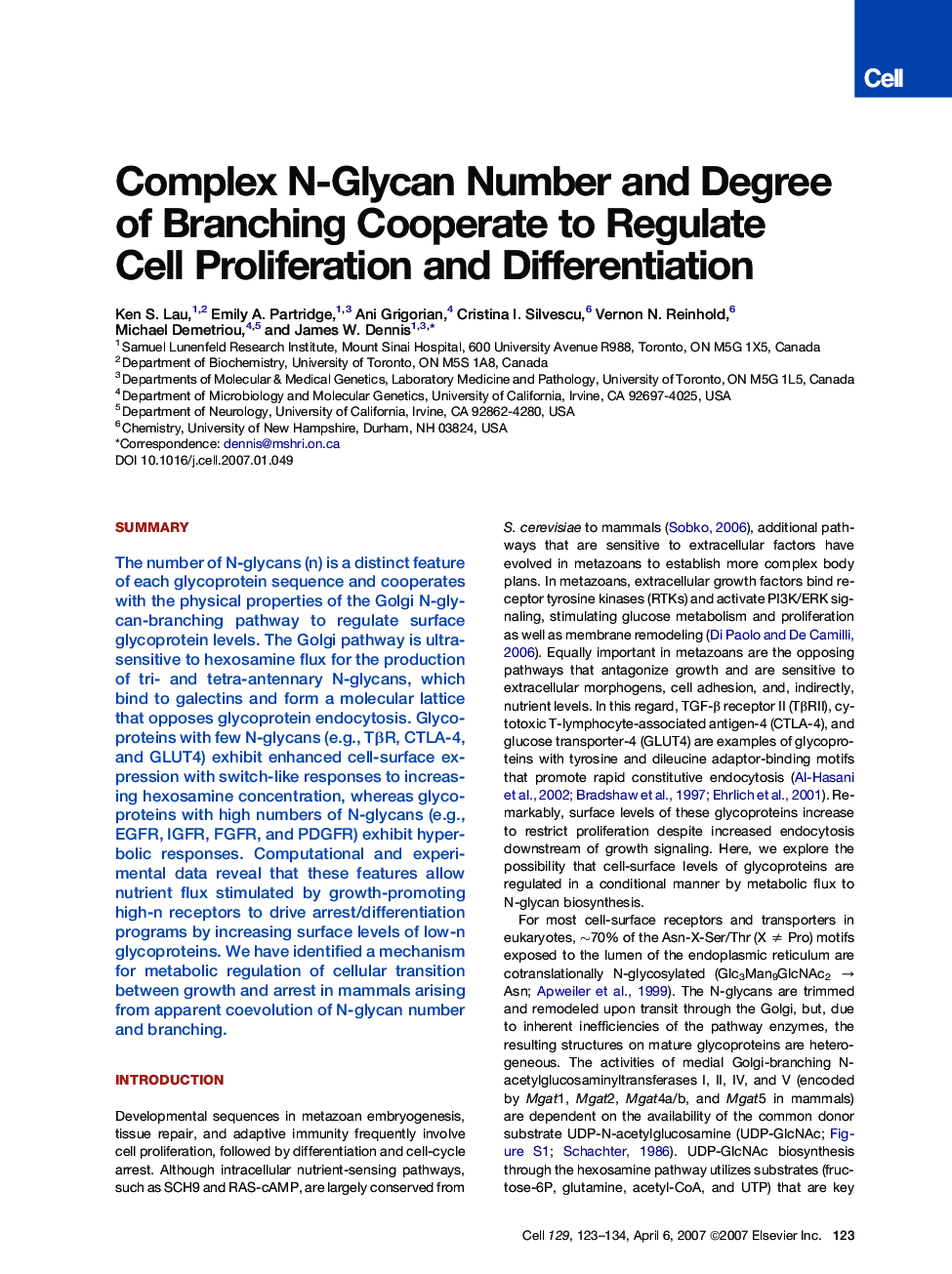| کد مقاله | کد نشریه | سال انتشار | مقاله انگلیسی | نسخه تمام متن |
|---|---|---|---|---|
| 2038354 | 1072363 | 2007 | 12 صفحه PDF | دانلود رایگان |

SummaryThe number of N-glycans (n) is a distinct feature of each glycoprotein sequence and cooperates with the physical properties of the Golgi N-glycan-branching pathway to regulate surface glycoprotein levels. The Golgi pathway is ultrasensitive to hexosamine flux for the production of tri- and tetra-antennary N-glycans, which bind to galectins and form a molecular lattice that opposes glycoprotein endocytosis. Glycoproteins with few N-glycans (e.g., TβR, CTLA-4, and GLUT4) exhibit enhanced cell-surface expression with switch-like responses to increasing hexosamine concentration, whereas glycoproteins with high numbers of N-glycans (e.g., EGFR, IGFR, FGFR, and PDGFR) exhibit hyperbolic responses. Computational and experimental data reveal that these features allow nutrient flux stimulated by growth-promoting high-n receptors to drive arrest/differentiation programs by increasing surface levels of low-n glycoproteins. We have identified a mechanism for metabolic regulation of cellular transition between growth and arrest in mammals arising from apparent coevolution of N-glycan number and branching.
Journal: - Volume 129, Issue 1, 6 April 2007, Pages 123–134